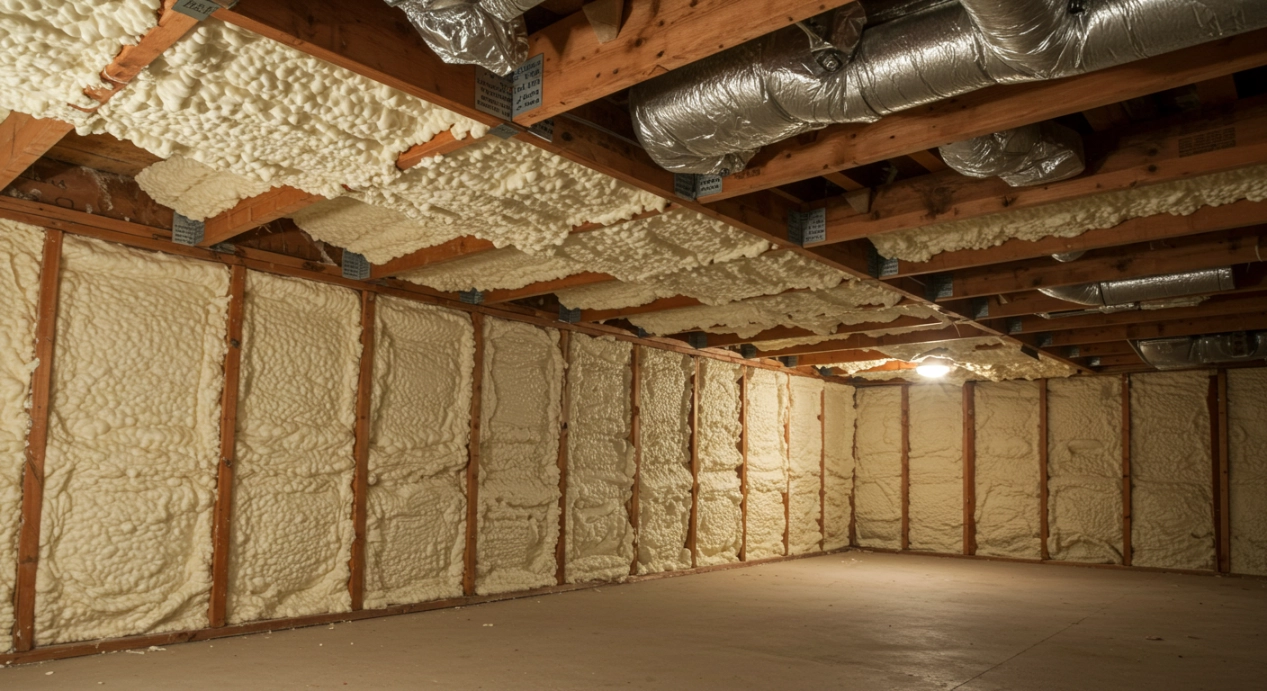Crawlspace insulation should be inspected every 12 to 18 months under standard conditions. In humid or variable climates like Central Texas, inspections every 6 to 12 months are recommended. Frequent checks help prevent moisture damage, rodent infestation, and thermal inefficiency, all of which can compromise the insulation’s integrity and the building’s energy performance.
Inspections allow early identification of compression, mold, and detachment, which are common in areas with fluctuating temperature and humidity. Timely detection supports cost-effective remediation and avoids deeper structural issues. Stellrr applies field-tested methods to verify insulation performance, using experience-based protocols proven across a wide range of property types.
Key Signs It’s Time for an Inspection
Moisture, Pests, and Uneven Temperatures
These are primary indicators that your insulation may be underperforming:
- Moisture or condensation on joists or insulation
- Musty odors or visible mold
- Cold floors or rising indoor humidity
- Rodent droppings, nests, or noise
Bonus Tip
If your crawlspace has no vapor barrier or if it’s vented, inspect it at least twice a year. These setups are more prone to seasonal damage.
Inspection Frequency Comparison
| Crawlspace Type | Climate Condition | Recommended Inspection Interval | Notes |
|---|---|---|---|
| Vented | Humid (e.g., Austin) | Every 6 months | High moisture risk |
| Vented | Dry | Every 12 months | Watch for rodent intrusion |
| Encapsulated (Sealed) | Any climate | Every 18 months | Lower exposure to outdoor conditions |
| Uninsulated or Old System | Any | Every 6 months | Degrades faster; lacks protection layer |
Technical Details and Material Performance
| Insulation Type | Material Lifespan | Common Issues | Inspection Focus Areas |
|---|---|---|---|
| Fiberglass Batts | 10-15 years | Sagging, moisture, mold | Vapor barrier, attachment |
| Closed Cell Foam | 20-30 years | None if installed correctly | Adhesion, shrinkage signs |
| Open Cell Foam | 15-20 years | Moisture absorption | Water stains, pest tunnels |
| Cellulose | 10-15 years | Settling, moisture damage | Compaction, fungal growth |
Things to Consider Before Making a Decision
- Ventilation Type: Vented crawlspaces allow more moisture in; sealed spaces require less frequent checks.
- Age of Insulation: Older materials degrade faster and require closer monitoring.
- Pest History: Prior infestations increase the risk of repeated damage.
- Location: Central Texas conditions accelerate mold growth and pest activity, demanding more frequent inspections.
- Energy Bills: Rising costs may indicate insulation failure.
Bonus Tip
After heavy rainfall or flooding, inspect the crawlspace immediately regardless of the last scheduled inspection.
Market Data
- A 2023 NAHB study found that 38% of crawlspaces with fiberglass insulation in high-humidity zones developed mold within 18 months.
- EPA reports show that up to 25% of household energy loss occurs through improperly insulated or damaged crawlspaces.
- According to the U.S. Department of Energy, homes with sealed and well-maintained crawlspaces can save annually on heating and cooling costs.
Stellrr Offers These Related Services
These options address insulation needs specifically for crawlspaces and related areas:
- Crawlspace Insulation: Installation and inspection for vented and sealed crawlspaces to maintain thermal efficiency.
- Closed Cell Insulation: Moisture-resistant spray foam that works well in sealed or high-humidity environments.
- Insulation Removal: Safe removal of damaged or outdated materials prior to replacement.
- Attic Insulation: Often inspected in parallel with crawlspace insulation to ensure total home efficiency.
Common Questions Before Choosing an Inspection Schedule
What if the insulation looks fine from the outside?
Damage such as mold or pest tunnels can occur beneath the surface or in hidden areas.
Can I inspect the crawlspace myself?
Yes, but signs like subtle moisture damage or partial sagging may require trained assessment.
Is encapsulation always better?
Not always. It depends on climate, budget, and the building’s original design.
How do I know if it’s moisture or pest damage?
Moisture damage often shows as soft, darkened spots; pest damage often includes tearing, droppings, or nests.
Get Expert Insulation Guidance
Book a crawlspace insulation inspection with a technician trained in regional insulation performance standards. Stellrr uses tested evaluation protocols for moisture, thermal loss, and physical degradation. For questions or scheduling:
Stellrr
Email: info@stellrr.com
Phone: (512) 710-2839
FAQ
How long does a crawlspace insulation inspection take?
Most inspections take between 45 minutes to 2 hours depending on crawlspace size and accessibility.
What tools are used during inspections?
Moisture meters, thermal imaging cameras, and flashlights are typically used to check insulation condition.
Is spray foam easier to maintain than fiberglass?
Yes. Spray foam, especially closed cell, requires less frequent checks and is more resistant to environmental damage.
Can insulation cause indoor air quality problems?
Yes, if it is moldy, damaged, or improperly installed. Inspections help prevent such issues.

